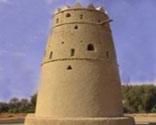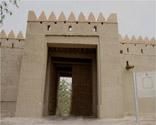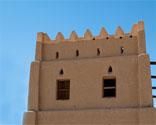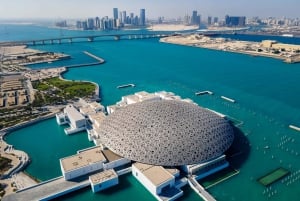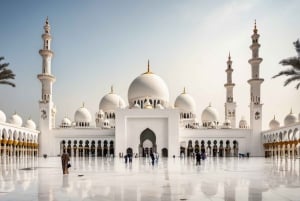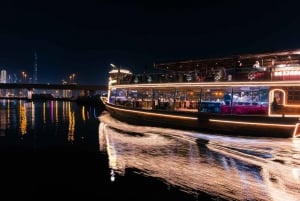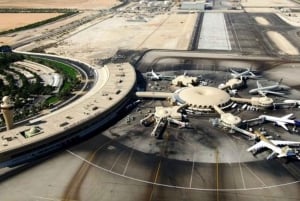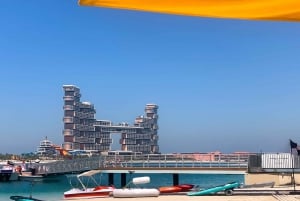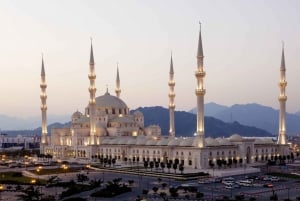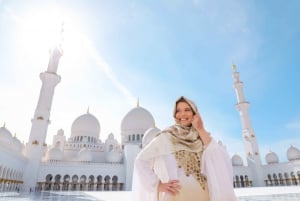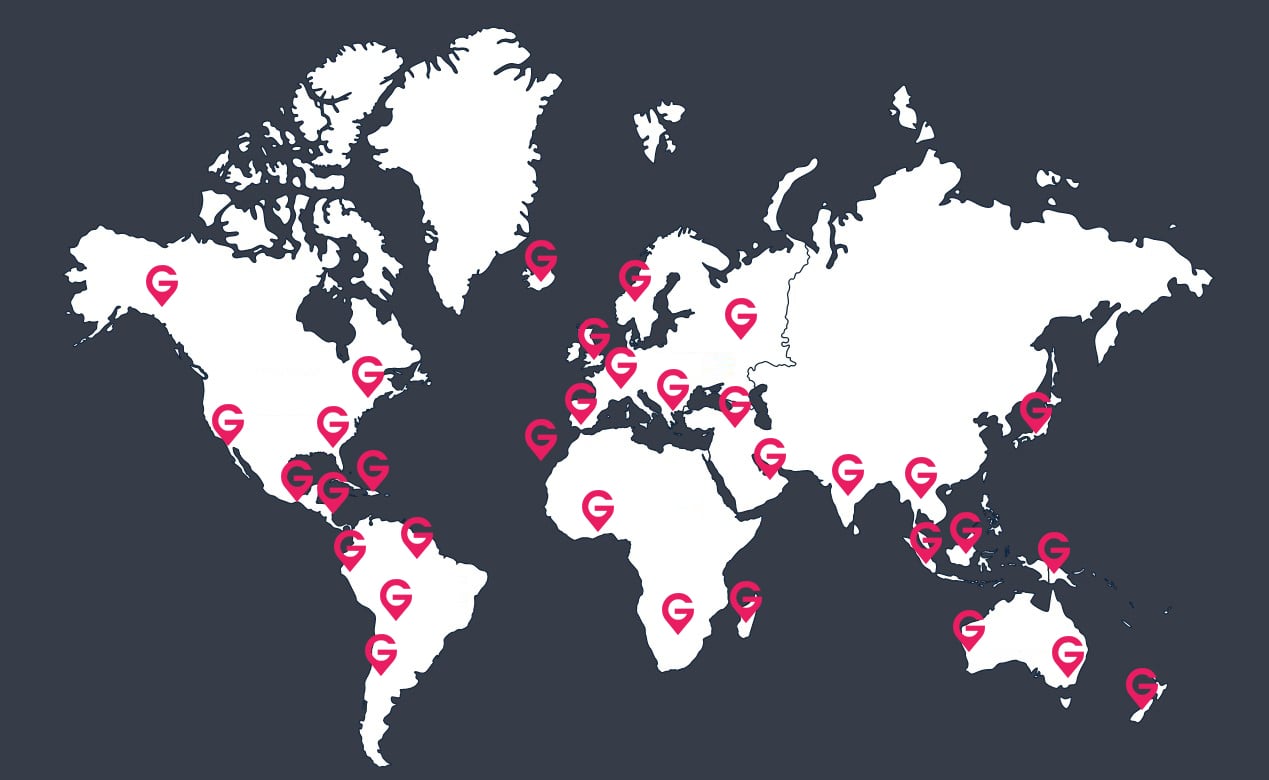Al Ain Forts and Castles
Built to last, the castles and forts in make fascinating places to visit and Al Ain has them in abundance. The castles and forts of Al Ain constitute treasure par excellence, a legacy of the history. Discover the cultural past of Abu Dhabi Emirate through a visit to the amazing historical sites.
1. Al Ain Palace Museum (Sheikh Zayed Palace)
Qasr al-Ain (Al Ain Palace), built in 1937, is one of the most important cultural places in Al Ain City and the former private residence of Sheikh Zayed, the late president who brought the UAE into modernity (1971-2004). A majestic fort, the Palace lies in the center of town at the edge of the Al Ain Oasis. It is a beautiful place to take a quiet walk and explore the verdant gardens, courtyards, long corridors, paintings and photographs of former leaders in Al Ain. Al Ain Palace Museum lies in the southeastern section of Al Ain City, near the commercial area on the road leading to the Industrial Area called Sinaiyya.
2. Al Jahili Fort
The Jahili Fort located in the centre of the city and is the largest of Al Ain’s forts. Built in the 19th century by Sheikh Zayed the First, it can be seen from the Al Ain oasis to the west of the city. The interior surfaces remain true to the historical appearance. The ceiling is made of palm rafters and palm leaves. A local clay plaster has been applied in the interior wall surfaces. The walls consist of air-dried earth blocks which can be built directly on the sandy ground without making foundations. A matting made of palm fronds covered with earth is laid on rafters made of split and quartered palm trunks arranged at an incline. Al Jahili Fort is located in the southeastern section of Al Ain City, near the Al Ain Palace Museum.
3. Al Murabba Fort
Located in the centre of Al Ain, Al Murabba Fort takes its name from the large, rectangular, three storey tower that dominates its low walled courtyard. Ordered its construction in 1948 when the late Sheikh Zayed Bin Sultan Al Nahyan was ruler of the Eastern Region; the construction of Al Murabba Fort began in 1948. The fort became a focal point for the community, providing a venue for wedding ceremonies, religious festivals such as Ramadan, and formal appointments. The Murabba Fort is located in the center of Al Ain City and is bound from the West and South by the main road, from the North by residential houses, and from the East by the police station.
4. Al Murayjib Fort
Built around 1816, the Al Murayjib fort is one of the oldest ones in Al Ain and surrounded by beautiful gardens. The location of the three buildings is in the west part of Al Murayjib Park. The main fort is a square building with two storeys and a staircase built with mud. The roof is protected by a wall with openings for archers and riflemen.
5. Mezyad Fort
This fort is one of the biggest forts in the eastern province of Abu Dhabi. Mezyad Fort was built in the 19th century and according to the Abu Dhabi Authority for Culture and Heritage, it is not known who ordered its construction. The courtyard and its date palm grove is encircled by more than 40 rooms, built on the inside of the 4 metres high parapets. The location of Mezyad Fort is on the west of Mezyad area in Al Ain, near the Green Mubazzara at the foot of Jabel Hafit. Visitors can approach the fort from 137th Street branching off Zayed bin Sultan Street.
6. The Eastern Fort (Sheikh Sultan bin Zayed Fort)
Sheikh Sultan bin Zayed Al Nahyan constructed the Eastern a 100 years ago and served as a residence to his family since then and until he succeeded as the ruler of Abu Dhabi in 1922. The Eastern fort is next to the Al Ain National Museum downtown, on the east side of Al Ain Oasis, coming from Abu Dhabi on the left side of Zayed bin Sultan Street, near the Murabba’ Roundabout.
7. Al Muwaiji Fort
The Palace is square in shape, encircled by thick walls crowned with crenellations and openings for shooting with rifles. There are three towers to protect the sides of the building. The Al Muwaiji fort is an important historic monument connected with the history and political succession of the Al Nahyan Rulers in Al Ain. Al Muwaiji Fort is located along the E22 inside the farm of HH the Late Sheikh Zayed bin Sultan Al Nahyan in Al Muwaiji village at the eastern entrance to Al Ain facing the Diwan of the Ruler’s Representative in the Eastern Region.
8. Seja Fort
With the shape of a square, the fort’s main entrance is facing the north and fences on three sides, North, South and East. There are three rooms on the western side and it form a fence on that side. There is also four rooms and a large yard inside the fort. The Seja Fort is located in the southern part of Al Ain City, on the left side of Al Ain - Dhahira road, 12 km away from Al Ghaf Youth Centre. The Seja Fort is surrounded by farmland and only accessible via a sandy road in Al Ain.
9. Al A’ankah Fort
Al Aankah Fort has got a rectangular two storey building and tower and it is surrounded by an octagonal fence with loopholes for archery and gun-shooting. The fort is located 55 km west of Al Ain City in Al A’ankah Village on the trucks’ road between Al Ain and Abu Dhabi. Sheikh Saeed bin Tahnoon who ruled the emirate of Abu Dhabi from 1845 to 1855 built Al A’ankah Fort in the second half of the nineteenth century.
10. Al Masoudi Tower
The late Sheikh Khalifa bin Zayed the First built Al Masoudi Tower at the end of the nineteenth century. Al Masoudi Tower lies within Al Masoodi area in Sheikh Essa bin Zayed farmland, next to the Sheikh Essa Mosque. You can visit the cylinder-shaped, twelve meters high tower by prior appointment. The roof is surrounded by pigeon holes and openings for gunfire; above the roof are triangular balconies.


